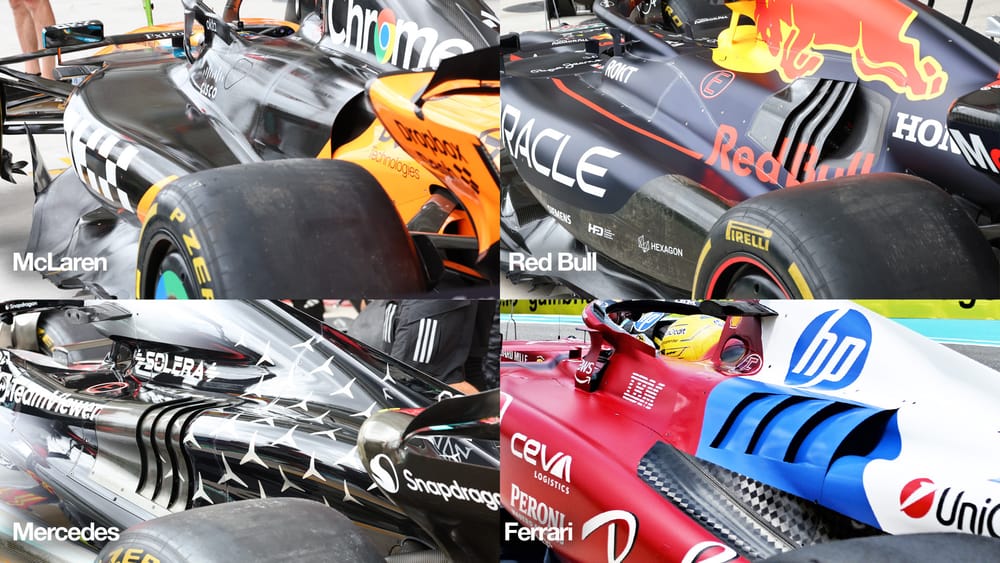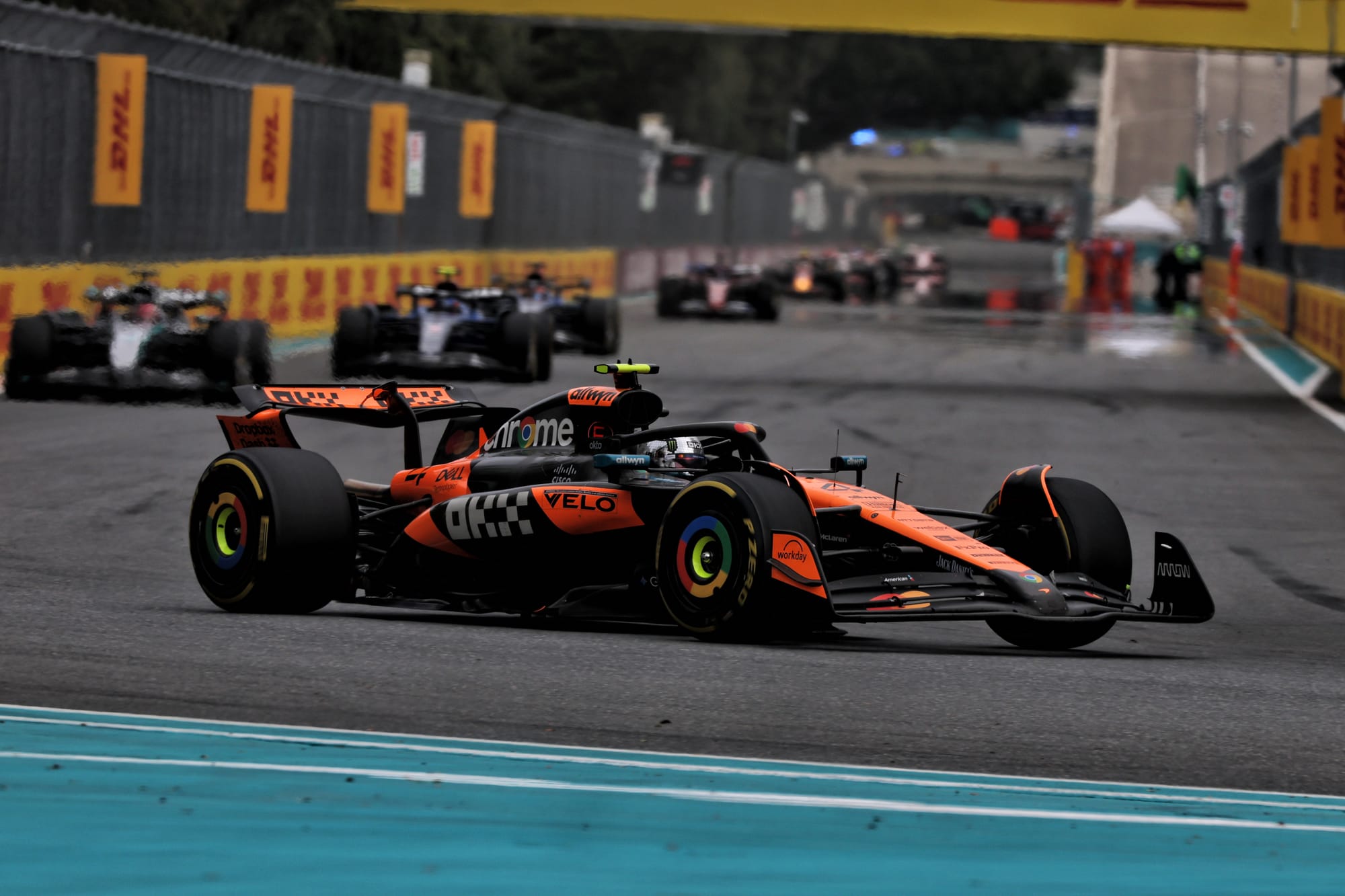McLaren's rivals have known for a while that its tyre advantage in hot races is impressive, but what was unleashed in Formula 1's Miami Grand Prix surprised even the team itself.
As Oscar Piastri reflected on a win that had him more than 37 seconds up the road from the nearest non-McLaren: "Clearly, this is the exception to the pace we've had this year.
"Yes, we've always had a strong car, but the pace we had from lap one it felt like was unexpected, even for us."
For its rivals, what played out in Miami was nothing less than depressing. Polesitter Max Verstappen came home in fourth, almost 40 seconds adrift of race-winner Oscar Piastri, and needed no reminder about how such a disparity is a lifetime in F1.

"They were miles up the road," he said. "They were just miles faster than everyone else on a track where thermal degradation is very high. They just have a massive advantage, I think that's quite clear."
Where McLaren excels is quite simple to explain in broad stroke terms, but quite complicated to understand when it comes down to the details.
The MCL39 is able to run its rear tyres at cooler temperatures compared to everybody else. This helps deliver a virtuous circle where the rubber is then able to perform better for longer, because it doesn't slide and then overheat even more.
As Verstappen explained: "If your tyres are running cooler, you have more grip. It's as simple as that."
The specifics of how McLaren is achieving this phenomenon is something none of its rivals understand for now - because if they did, you can be sure they would have adopted it themselves.
Miami appears to have been a perfect stomping ground because both air and track temperatures were the hottest so far this season.
Australia was overcast and cool. China and Japan chilly. Then, while Bahrain and Saudi were warm, both events were at night so the asphalt surface was not being heated by the sun and that means a further difference in interaction with the tyres.
Track temperature variation 2025
Australia: 19°C
China: 34-36°C
Japan: 19-21°C
Bahrain: 30-32°C
Saudi: 38-36°C
Miami: 40-35°C
The conditions in Miami then simply exaggerated McLaren's advantage, a phenomenon that had been seen in the daytime practice sessions in Bahrain and Saudi Arabia too.
As Piastri said about conditions during the Miami race: "All the corners become even slower, and looking after the tyres becomes more important. That's probably been a strength of ours so far this year.
"This has been the first very hot race we've had in terms of track temperature. Saudi was hot, but the track temperature [in Miami] was the highest we've had all year. I think that helped our pace."
While McLaren is certainly a step ahead of everyone else when it comes to tyre management, what is important to point out is that this is not the only element that explains why it finished so far in front in Miami.
There are some other factors that proved equally critical to why McLaren was so fast.
One of them is its cooling configuration, with the team seemingly better able to keep its car closed up for better aerodynamic efficiency when temperatures climb.
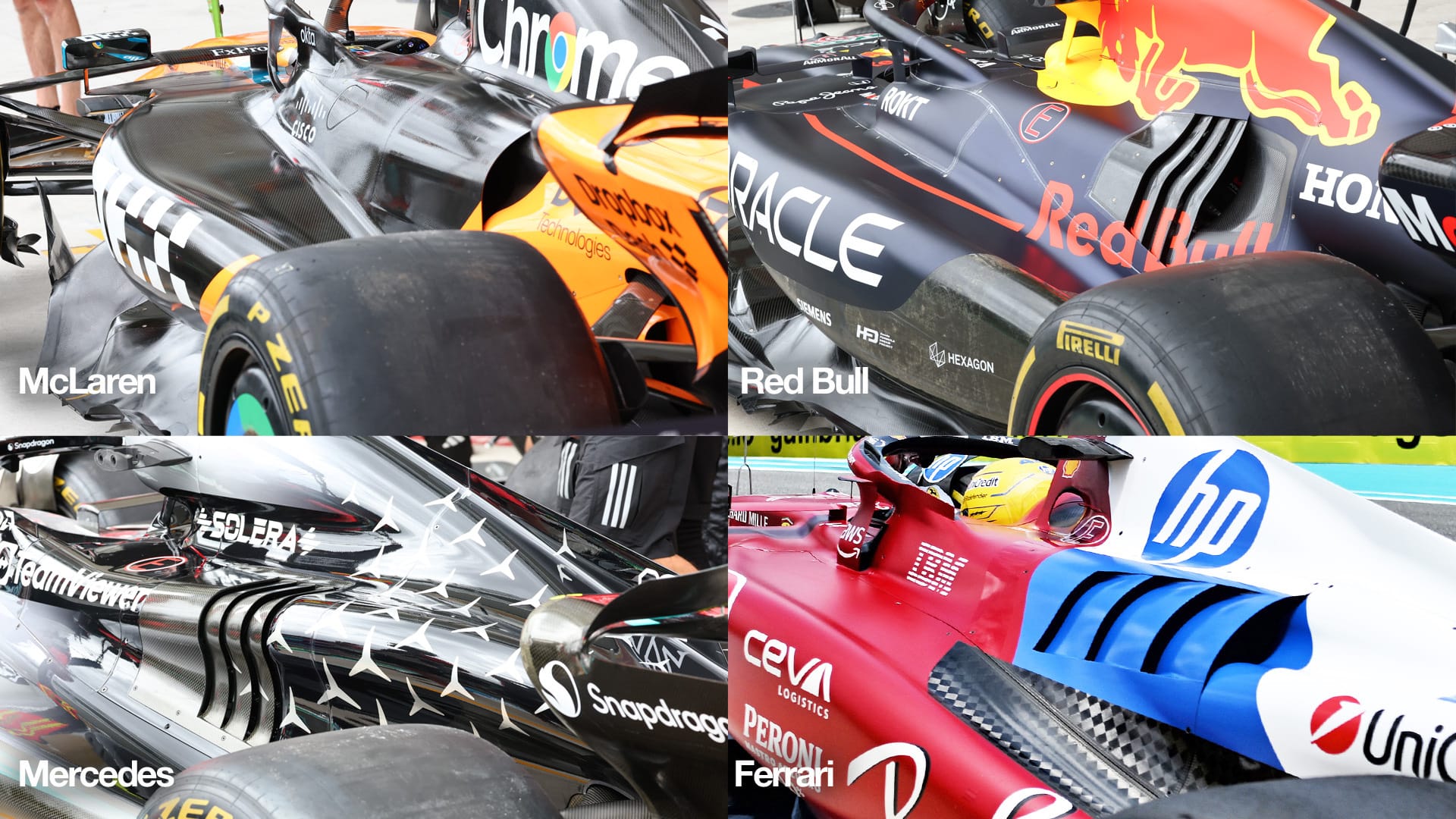
The images above and below, which compare the MCL39 to its main opposition, show how McLaren is better able to run its car in a manner where the bodywork is more closed off - which is much better for aerodynamic performance.
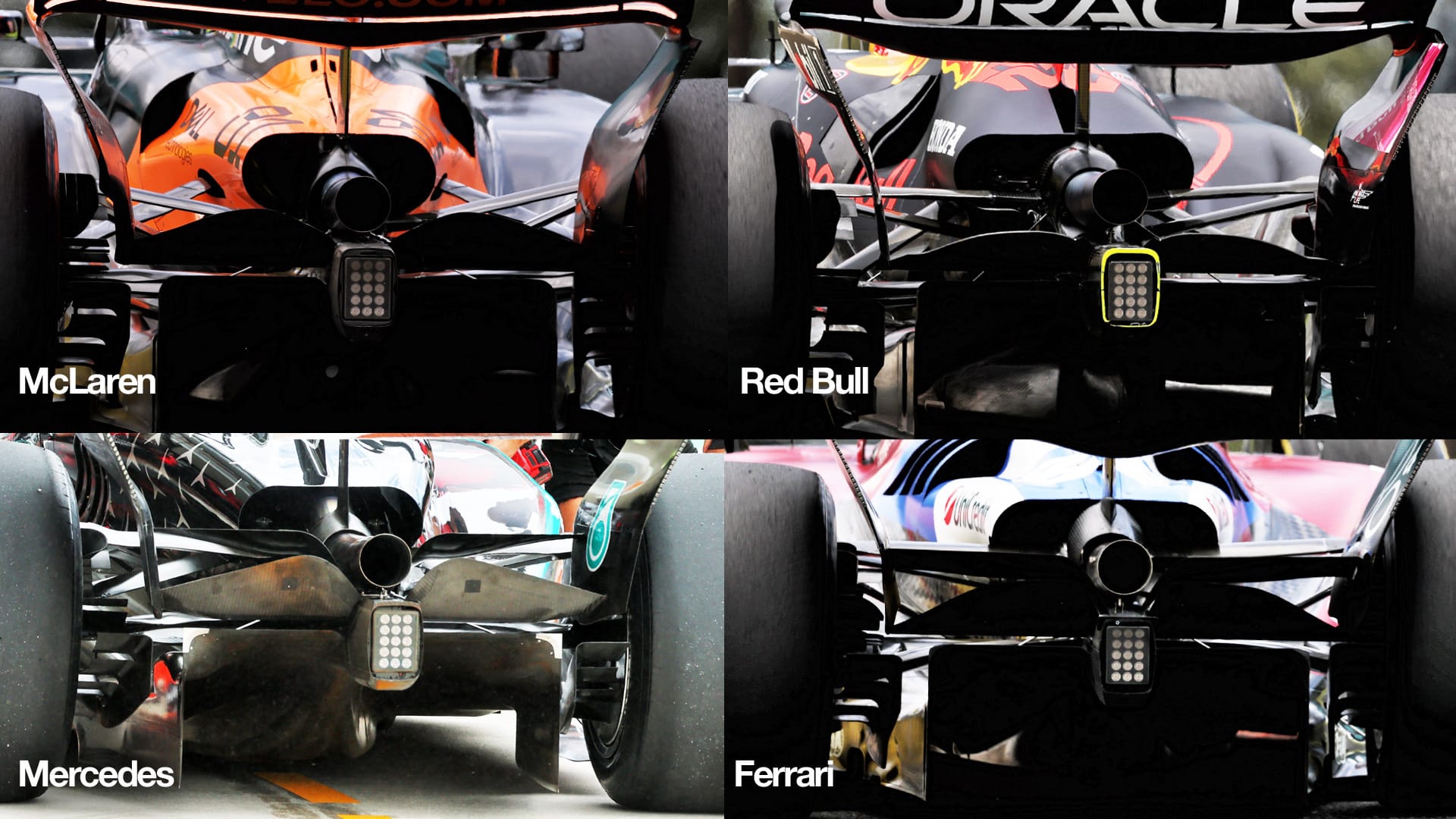
As McLaren team principal Andrea Stella said: "Especially when it's hot, there's another characteristic which I think works very well with our car, which is the cooling system.
"When it's hot, our car, you can see that is relatively closed from a bodywork point of view, because there's been also great engineering gone into the cooling system and car layout.
"So I think in these conditions, we see that the excellence of the engineering at McLaren has reached a point where it can make the difference to this kind of extent."
The relative game
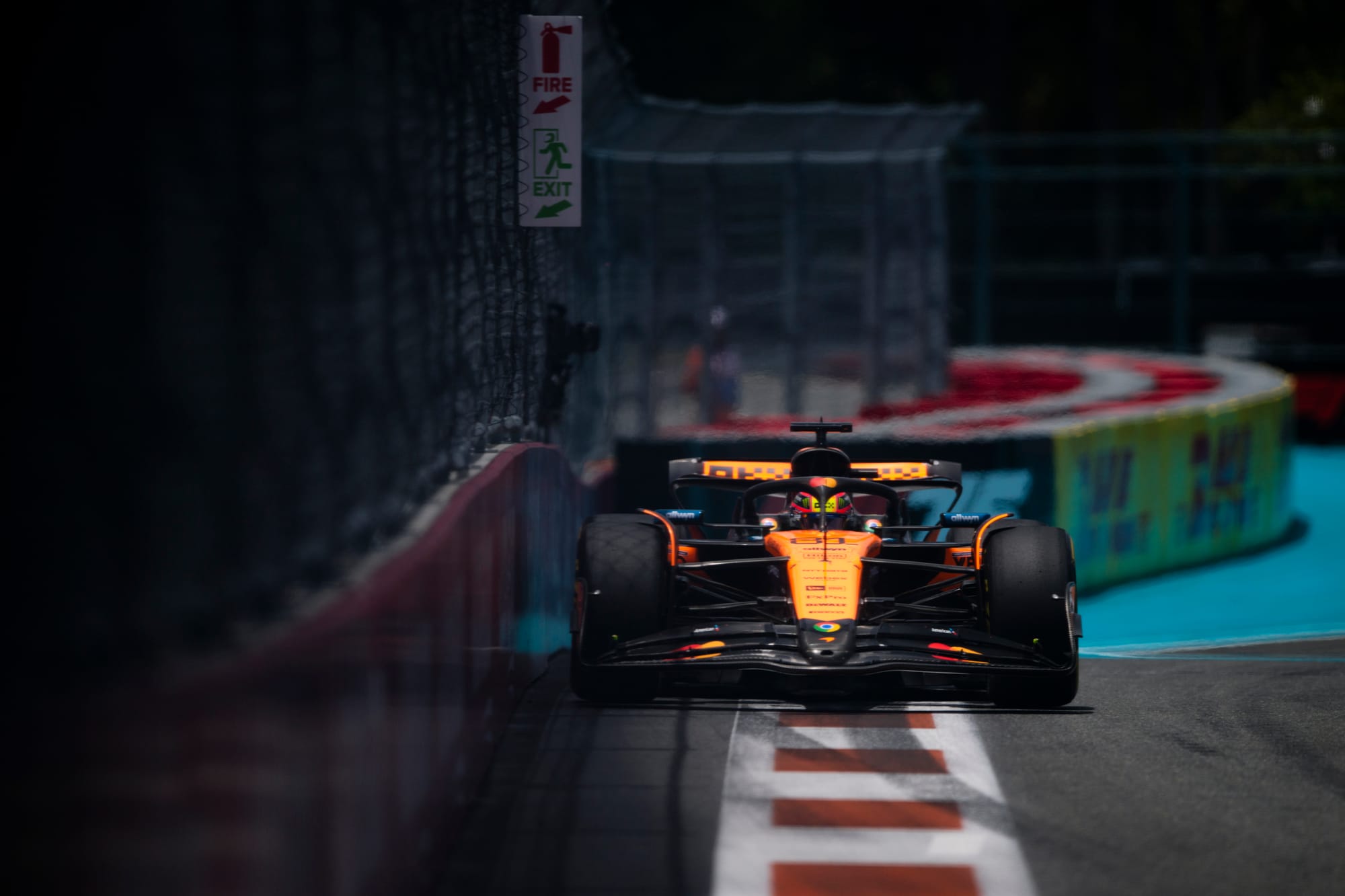
Something else that needs to be taken into account is that F1 is also a relative game - and the final Miami result was not just about how much stronger McLaren was, but also how much weaker the opposition were.
From Verstappen's perspective, his afternoon was hampered from the off by a recurring brake issue that not only triggered lock ups that cost laptime, but also had an impact in driving up the tyre temperatures.
"We had some issues with the brakes that Max hasn't been happy with," said Red Bull team boss Christian Horner.
"I think that might be compounding or contributing to the issue, but I think once the drivers talk about a numbness in the car then things effectively start to overheat."
We also did not see the full extent of Verstappen's pace as he got trapped in the dirty air behind George Russell following the stops (with Russell jumping ahead under the virtual safety car).
So as well as that impacting his tyre and brake temperatures, it meant his speed was pretty much dictated by the Mercedes ahead of him, which already in Jeddah had shown some struggles with overheating tyres.
Mercedes boss Toto Wolff said that while his squad could match McLaren and Red Bull in qualifying, things were different over race stints.
"I believe on a single lap or a few laps, we know absolutely where it can be, but we're just not good with the tyres over an extended run," he said.
"McLaren shows how it's been done. To a degree I think Red Bull with Max is managing it better, tricky performances. We're solid in what we're doing but they are definitely doing an excellent job by being able to go fast around the corners without overheating them.
"This is what we need to look up to and engineer our way out of."
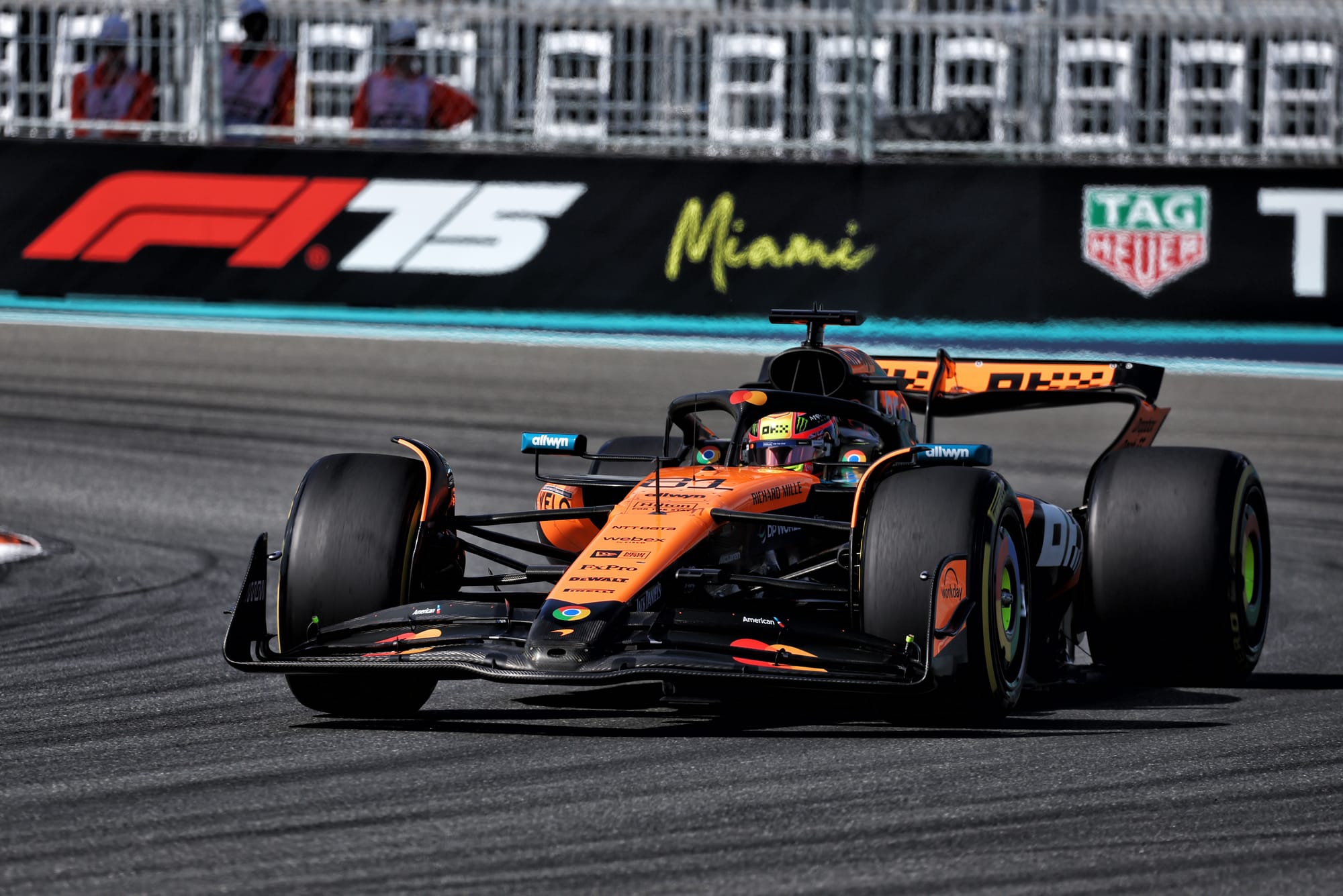
For now, McLaren holds the advantage. And, perhaps of concern to its rivals, is that its edge with tyre cooling is something that was engineered in from the off over the winter as it made some critical concept choices with its car.
As Stella remarked: "We have looked holistically at all the characteristics that you can have in a car that influence the behaviour of the tyres.
"And I just want to take the opportunity to praise the work that has been done by the engineers at McLaren in terms of identifying these factors, designing these factors in a way that is practical, and to actually cash in this kind of benefit, and then master one of the matters that still in F1 looks like it's a little bit of a black art, which is dealing with tyres."


